Suunto 9 baro very low elevation gain vs other brands
-
@cosmecosta said in Suunto 9 baro very low elevation gain vs other brands:
sometimes people put a lot of trust in Strava when the values are wrong.
With my old Spartan Ultra I experienced for cycling activities no noteworthy differences between ascent of the watch and ascent of Strava’s GPS based ascent.
I usually have 850 to 1000 meters of climbing on a distance of 35 km with the mountain bike. The difference is usually about 10 to 15 meters between SSU and Strava, if I use the option to use the ascent of Strava.
-
@pilleus Well mi experience is different, in trail running differences can be very big, more than one hundred meters in a 400 m ascent run.
For the MTB, I’m using a dedicated barometric GPS that has always overrode the Strava correction, and Strava shows the GPS value but I have checked using Strava’s correction and:
GPS: 803 m / Strava 766 m
GPS: 697 m / Strava 635 m
GPS: 711 m / Strava 630 mAnd this are 3 random activities that I checked.
So…
-
@cosmecosta I think the problem is the terrain. A GPS track 3 meters away from the path or street in steep and hilly terrain will cause a miscalculation of Strava’s GPS based data.
And I experienced that my SSU is more accurate recording the ascent than my S9B.
-
@Dimitrios-Kanellopoulos said in Suunto 9 baro very low elevation gain vs other brands:
Expected
I dont know how to send you a private message so I loded it here:
-
This is the FIT file from Suunto App (with elevation gain 1243 m):
MountainBiking_2020-12-18T06_44_10.fit -
The elevation gain in Strava is: 1542 m.
-
-
So this is what I do.
I go to https://runalyze.com/activity/new-upload and upload the fit file.
Then I go to course and elevation data and I correct them with the various DEDB (elevation databases) that the great Runalyze offers
Look at the thresholds! Even Runanalyze defaults to 3m but take a good look and see what is produced with other thresholds as well
- Racemap elevation service
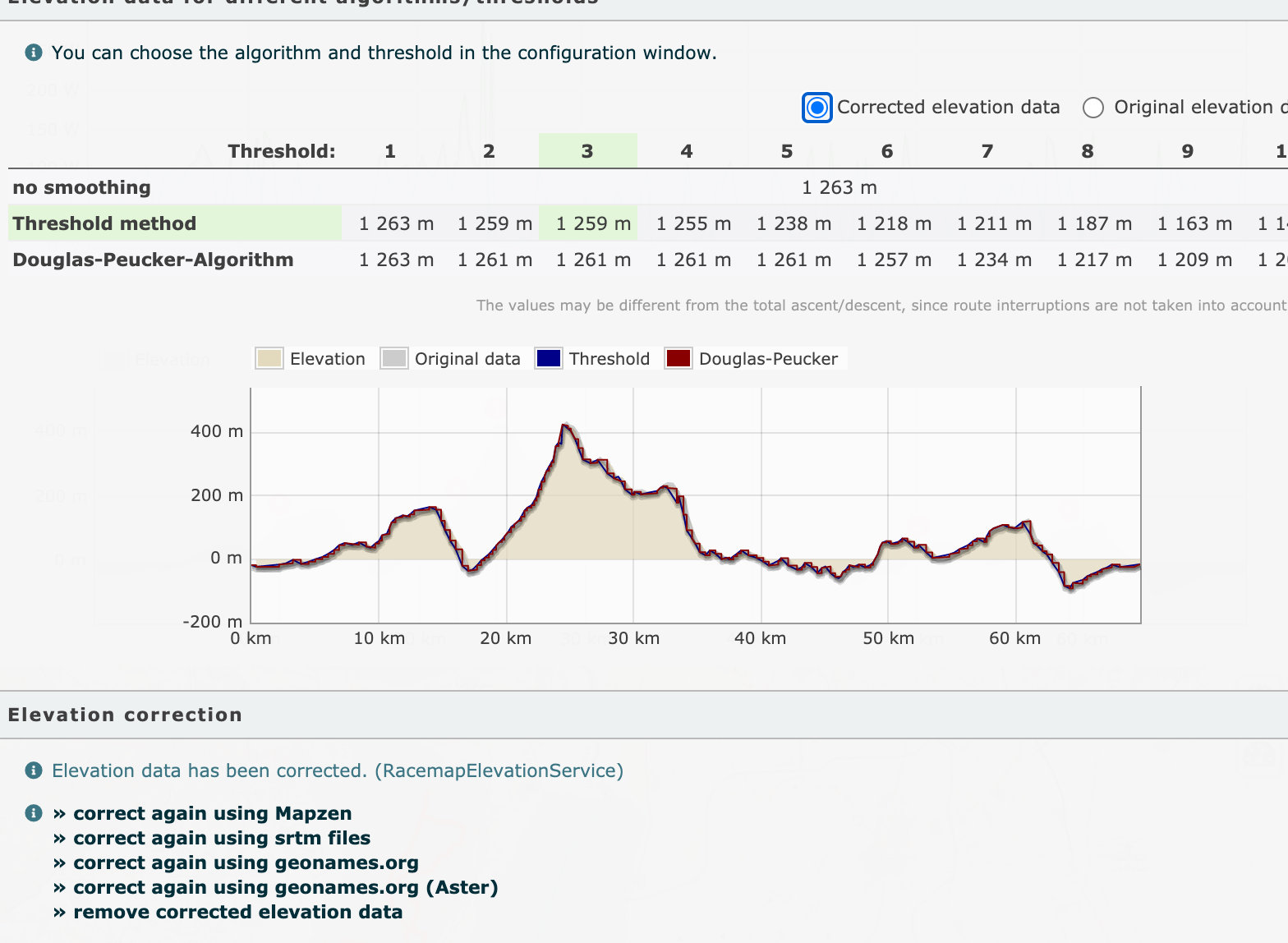
- Geotiff
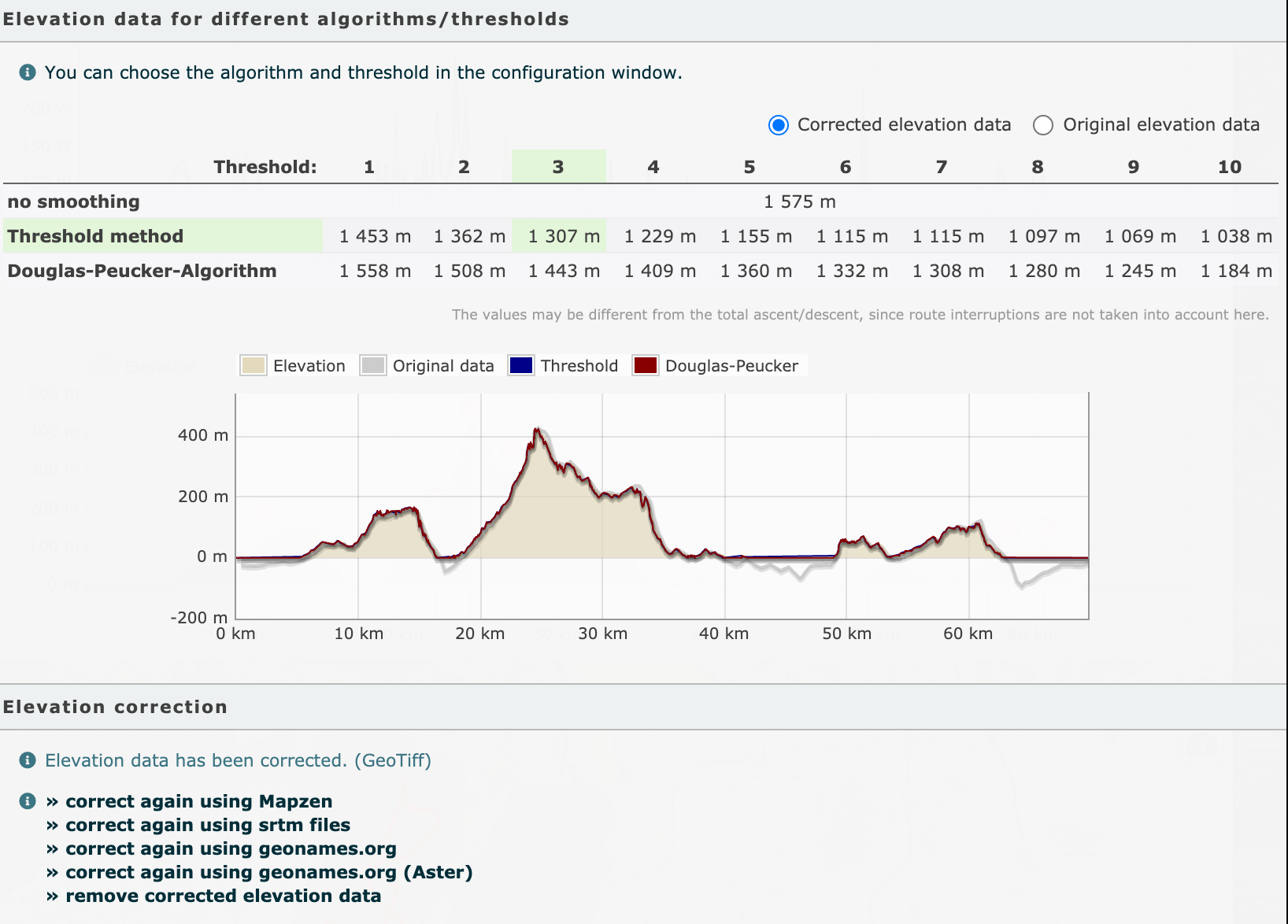
- Geonames

- Geonames ASter
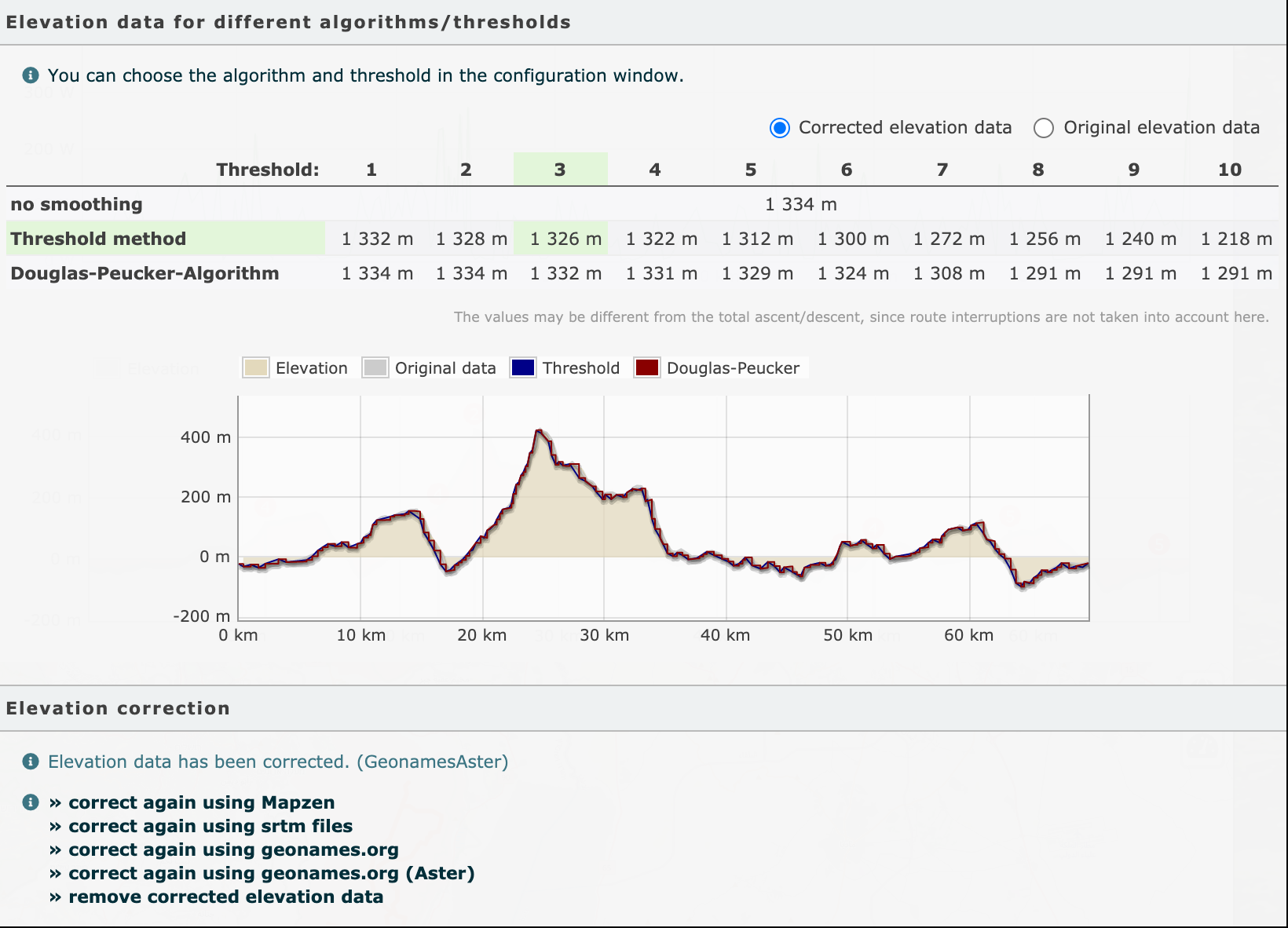
To be honest all show less actually than Strava.
Now since you are using comparing whahoo I had seen this video at the past https://www.youtube.com/watch?v=bPyEtZH3QaU about how much positioning could affect a garmin computer. But I suppose the same flaws can happen with the S9.
My conclusion is that it’s up to you to judge how much ascent you did and with what threshold.
As a reference example here is an analysis of my 16km almost flat bikeride at Netherlands. It is completely almost flat here so:
- No correction (still 13m)
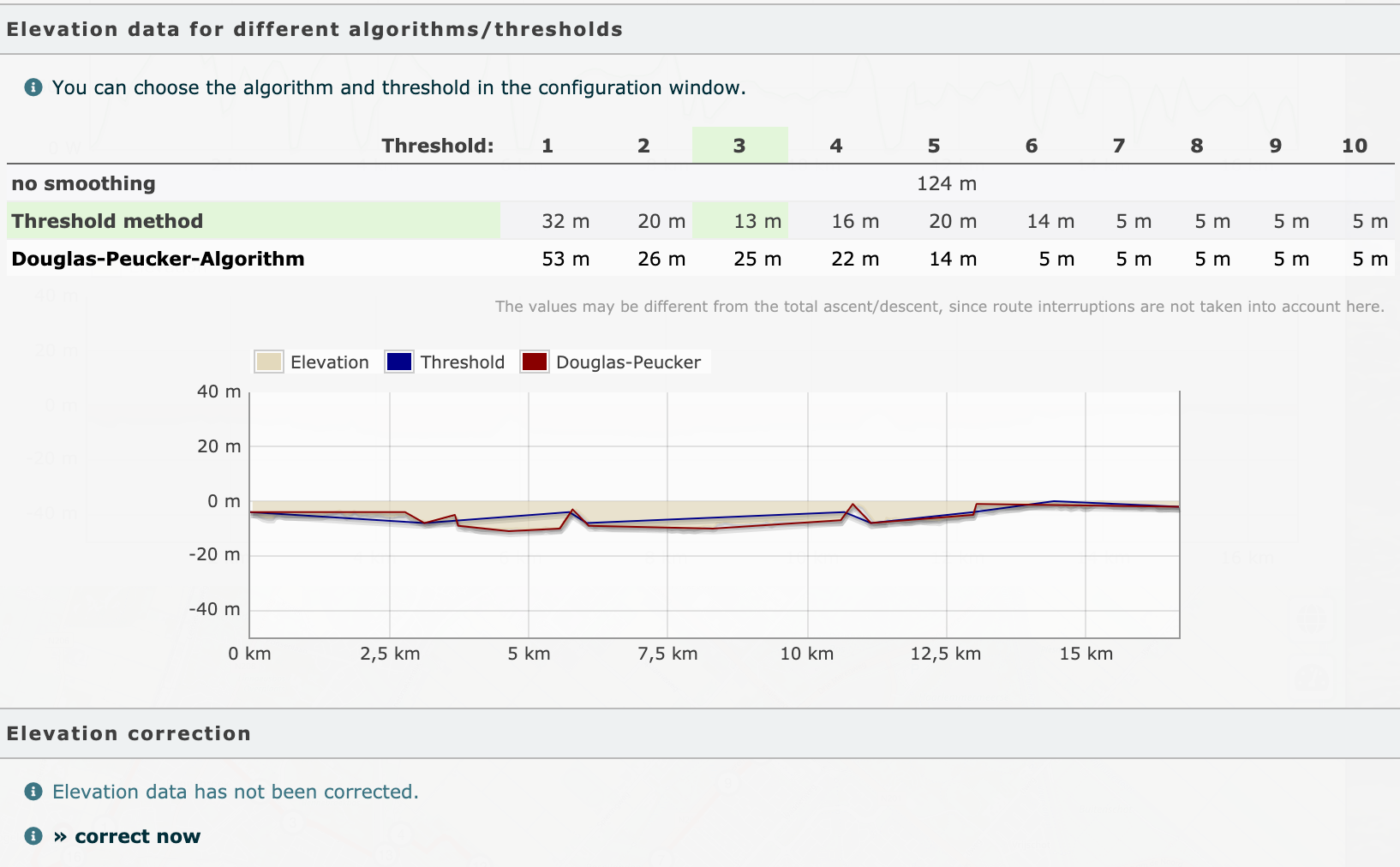
- Racemap
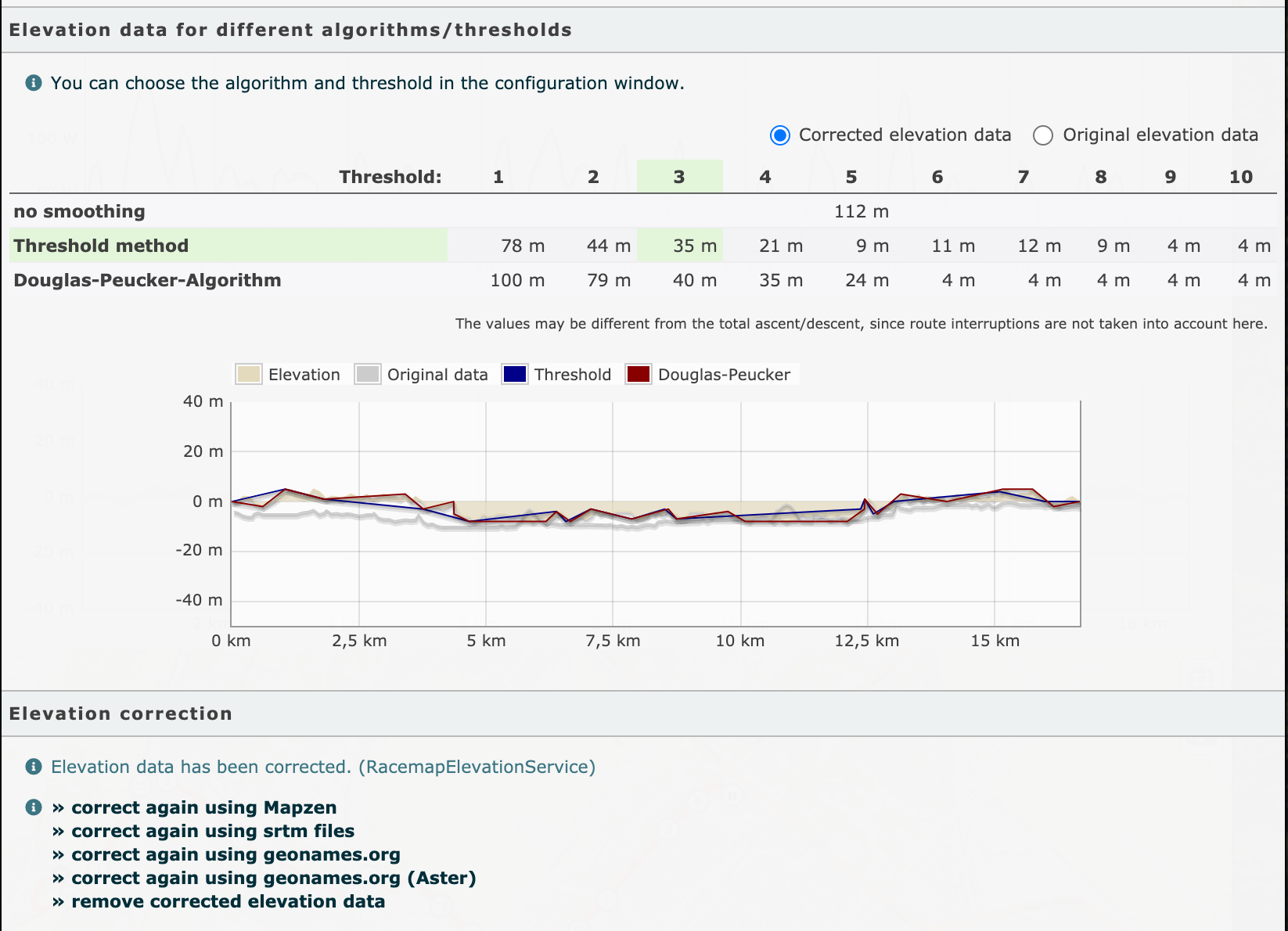
- Geotiff
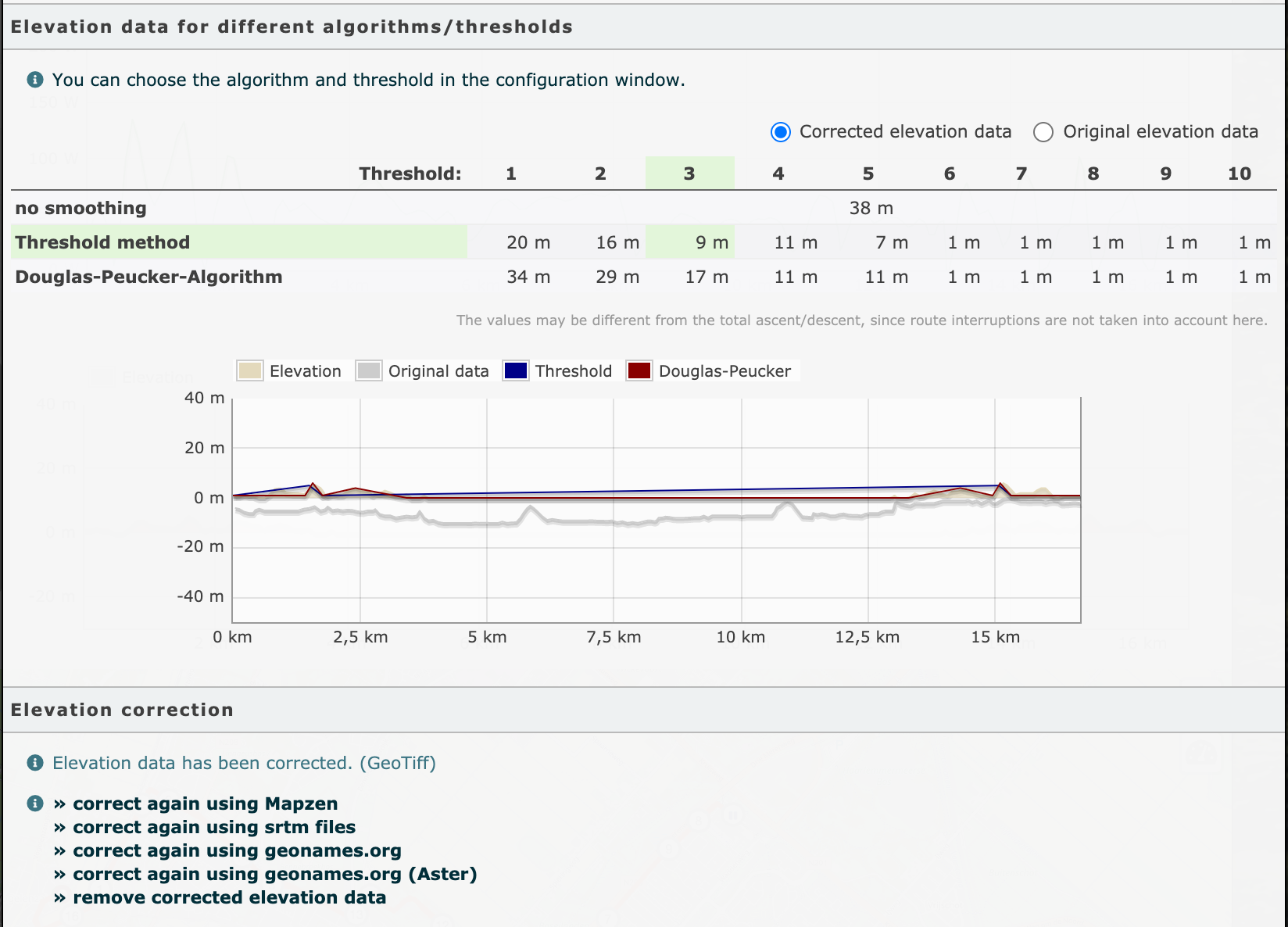
- Geonames
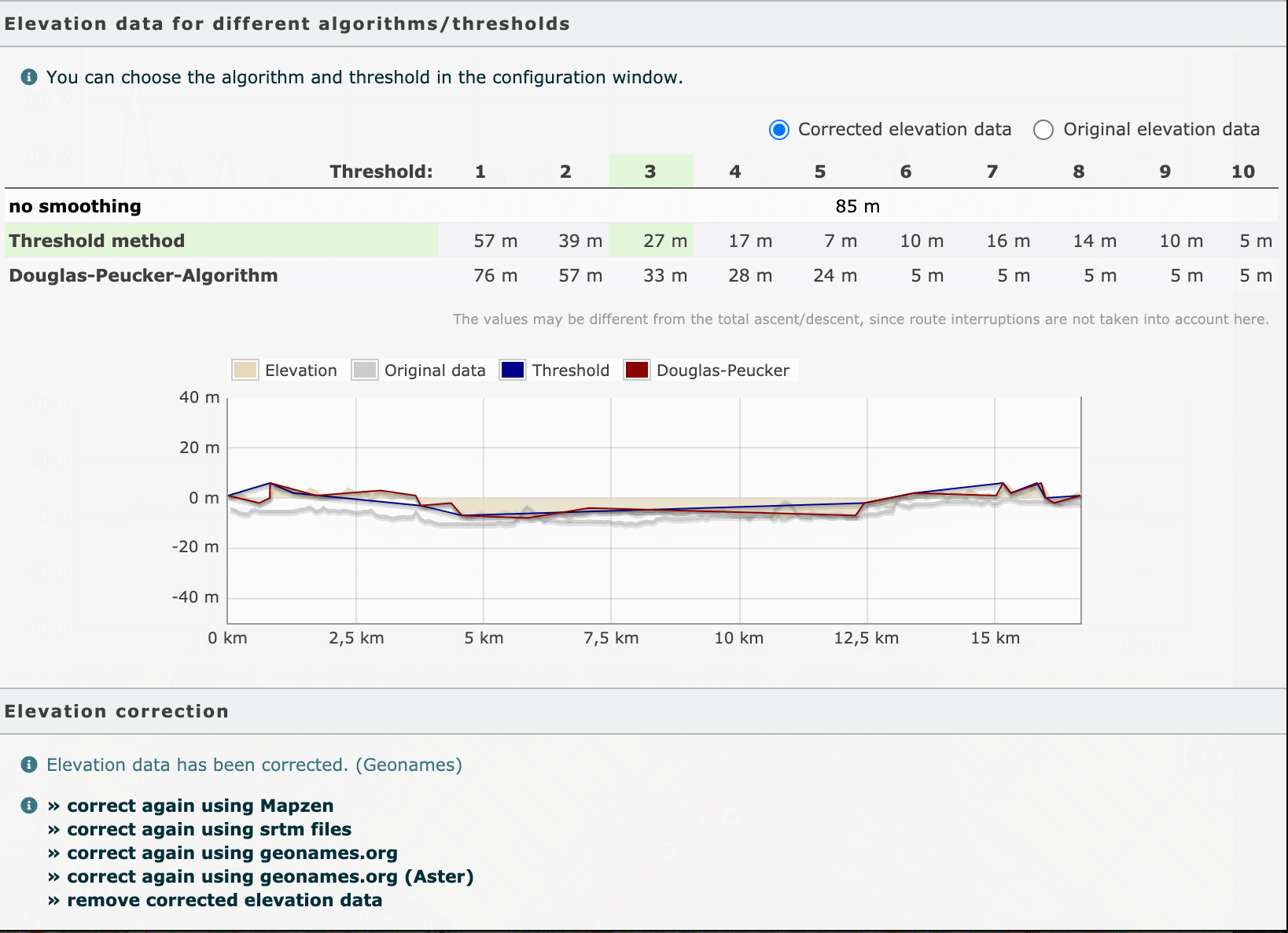
- Geonames aster -> Completly wrong
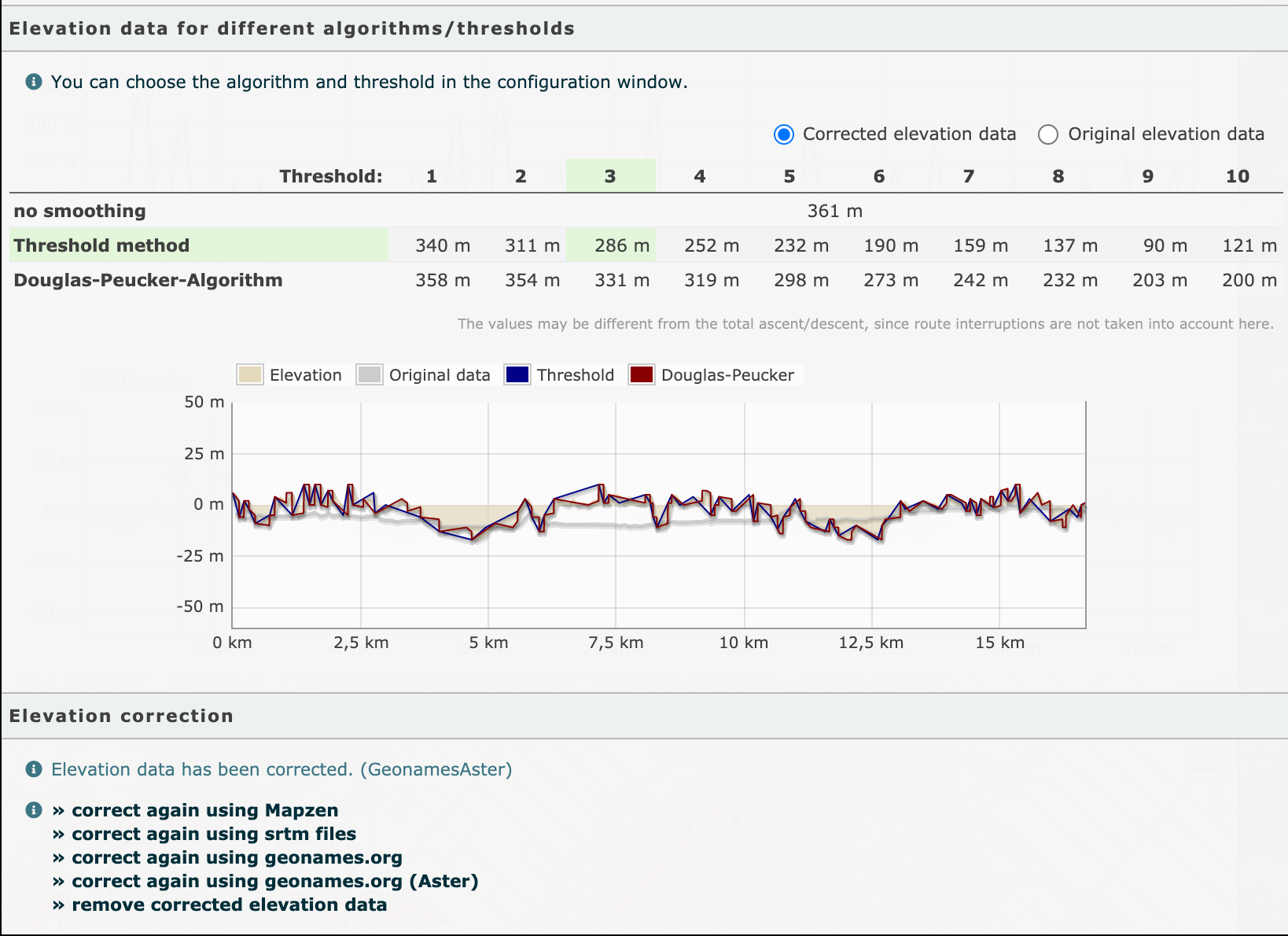
Now, this is my personal opinion.
If you get bothered and you want those extra meters to show at your Strava / Other service or your friends get more ascent etc my advice as I would give to a friend is to get the same device that their friends use or the one that gives you what you want to see for your data.
Why this advice ? Because it all about perspective and no perspective can fit everyone.
I hope this helps
PS: The highlight on the screenshots shows what Runalyze prefers it’s not me highlighting that .
- Racemap elevation service
-
@Dimitrios-Kanellopoulos said in Suunto 9 baro very low elevation gain vs other brands:
Racemap
Thank you for your time.
I played with it a bit.Threshold = 1 , without correction -> 1529, this is what I expected to get.
Maybe we are lossing too much elevation with Threshold = 3.
It was great if the user could have set it in his watch settings.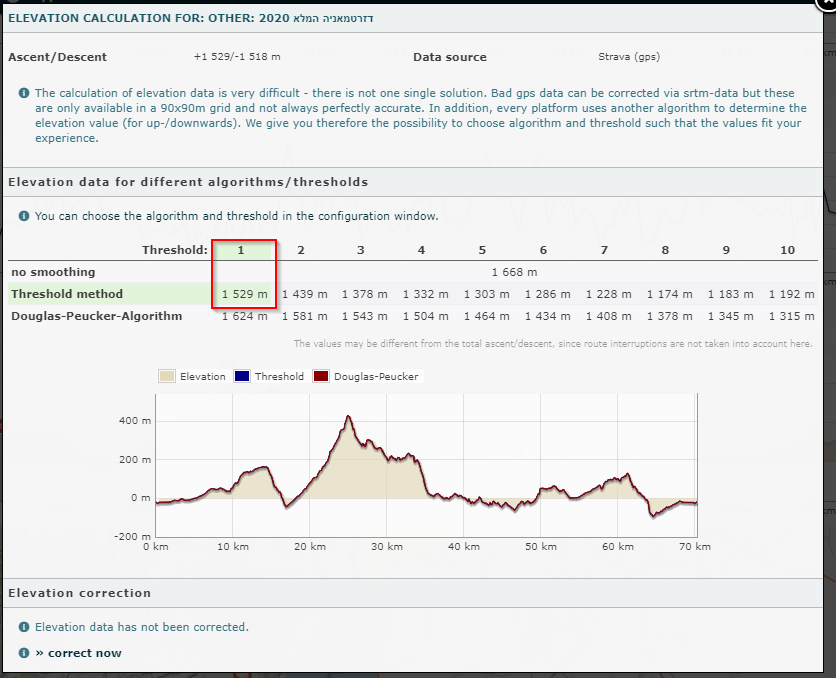
-
@Oktan I think soo. My Suunto 9 sometimes it shows up to 100-150m of elevation difference regarding other brands or even with Suunto spartan and suunto 7. (Talknig about just for 500m of elevation gain). For example my suunto shows 479m gain and friends’ one it shows 580m
-
There’s one important thing missing in the discussion about thresholds etc.
It is the sensor accuracy itself.
We are talking about a measurement device that only works down to a certain precision.
Plus it is affected by influence like wind turbulence while moving.
In a perfect world or laboratory setting it could probably register pressure changes that are as small as 1ft or 1m causes it.
But in real life there is noise to the data.
This is why it totally makes sense to use thresholds, filtering and other logical information like sport mode or speed etc.
If you switched the threshold to 1m, you would just see a lof of this sensor noise in your data which just don’t make sense.My 2c from an engineer perspective specializing in measurement technology
-
@Egika thanks man
-
@Egika I get it, but I add: why not let the user define it in the watch?
Suunto can set it to 3 as default.
The user can choose to set it between 1 to 3, and still proudly ride with Garmin owners friends .
. -
@Oktan
who proofs that Garmin is calculating the total ascent “more correct” in all different possible use cases? -
@TELE-HO I just assumed that if Garmin, Wahoo and Strava app display more or less similar values - most chances they are calculating right.
-
@Oktan
I once observed a recording from a friend who did a roadbike ride of >4’000m ascent and was heavily impressed. He recorded it with the Strava App and when I looked at the details I noticed that it summed up completely wrong… it was something around 2’500m ascent. Not a piece of cake either, but I noticed this over all his activities then… -
@Oktan
but hey, don’t get me wrong here. We all know that I don’t know it better wither
It’s just my feeling that Suunto is aiming for an accurate summary and covers many type of sports. Strava, I have no idea, there are many strange things that prevent me from paying for a pro account… Wahoo has a nice reputation but as far as I know it is more developed for cyclists?As @Egika says the watches are measurement devices (I remember Suunto sensor has an accuracy of 20cm…) and the rest is a software thing.
-
@Oktan said in Suunto 9 baro very low elevation gain vs other brands:
@Egika I get it, but I add: why not let the user define it in the watch?
Suunto can set it to 3 as default.
The user can choose to set it between 1 to 3, and still proudly ride with Garmin owners friends .
.As a user I am 100% for messing with stuff (although it may bite me back eventually), but if I was a company I would think about all the calls I would get to my support just because users messed up things

-
@isazi
with Android I remember that real cracks did root their devices…
-
My personal opinion is transparency goes a long way. @Dimitrios-Kanellopoulos explanations provide context and through that - understanding. It is clear total ascent values are tricky and it would be easier for Suunto to make every decision in favor of greater accumulated gain as this would make all of us feel better about our efforts. It appears they’ve instead chosen to make every decision with the goal of being as accurate as possible. They deserve credit for taking the harder road IMO.
-
@fazel said in Suunto 9 baro very low elevation gain vs other brands:
this would make all of us feel better about our efforts.
Unfortunately this is what “modern athletes” want from sport watches/platform … showing that they have it bigger

Very low percentage of “athletes” do sports for their own satisfaction nowadays
-
@sartoric isnt satisfaction goes bigger when you got, hmmm, bigger?
-
@TELE-HO said in Suunto 9 baro very low elevation gain vs other brands:
who proofs that Garmin is calculating the total ascent “more correct” in all different possible use cases?
The proof is very easy to get - just open the elevation profile generated from an activity and add all the climbs manually - that isn’t difficult at all. When I did that in the past I ignored all small elevation changes less than 3 meters, but even then Suunto 9 was often short on total ascent compared to its own elevation profile.